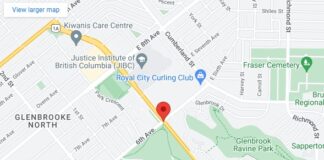VANCOUVER City Council on Tuesday committed to innovation and environmental sustainability with measures to support more mass timber buildings in Vancouver.
“Mass timber is the building material of the future, and we’re thrilled that Vancouver and B.C. are at the forefront of this movement,” said Vancouver Mayor Ken Sim. “It’s a game-changer, offering significant environmental benefits by reducing emissions compared to typical concrete buildings. It’s not only affordable and safe, but stands strong against fires and earthquakes. Embracing eco-friendly materials like mass timber isn’t just responsible – it’s a boost for our local economy, creating jobs right here in our community.”
The newly approved tools aim to encourage more high-rise mass timber construction and support the transition to more sustainable construction practices in Vancouver.
A new rezoning incentive will offer additional height and floor area for mass timber buildings:
- Buildings in areas that allow 8 to11 storeys can qualify for two additional storeys.
- Buildings in areas that allow 12 or more storeys can qualify for three additional storeys.
A new incentive in the Zoning and Development By-law will see an increase in the permitted height for mass timber, and additional support at the pre-application stage.
B.C. is a global leader in mass timber production. Mass timber products are thick, compressed layers of wood, that are solid, and provide structural load-bearing components such as columns, beams and panels. Engineered for strength, they are typically manufactured off-site by fastening multiple layers of smaller dimension wood together with glue, dowels or nails. This approach means that large diameter trees are not needed to make mass timber.
Mass timber has the potential to reduce embodied emissions in construction by 25-45 per cent compared to typical concrete buildings. It offers cost-effectiveness, safety, fire resistance and seismic resilience, while being quicker to construct.
Embodied emissions are generated locally and globally through the production and transportation of building materials, like cement and steel, which are both carbon intensive. Natural materials like wood, if sourced sustainably, are not only low carbon in their production, but can retain the stored atmospheric carbon safely for the life of the product.
As a locally produced, high-value natural material, mass timber is integral to Vancouver’s strategy to update building practices to less carbon intensive, more environmentally friendly material choices.
By providing incentives and removing barriers, the City is advancing Climate Emergency Action Plan commitments to reduce embodied carbon emissions in construction materials by 40 per cent by 2030 (from 2018 levels), while fostering local job creation, economic growth and more sustainable construction practices.
The new incentives are the result of extensive collaboration with developers, consultants, architects, and various City departments. This ensures a well-informed and inclusive strategy to encourage the adoption of mass timber. The City is committed to monitoring the uptake of incentives over the next two years, with a promise to adjust and expand the toolkit based on real-world results and ongoing stakeholder feedback.
To learn more, visit: https://vancouver.ca/mass-













